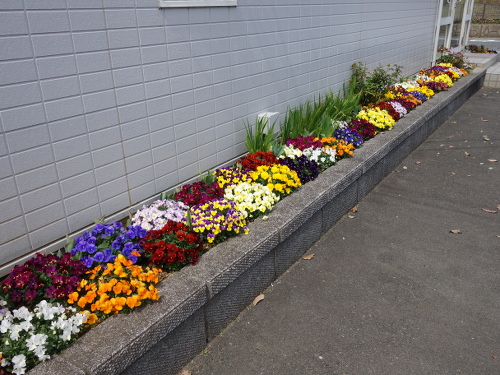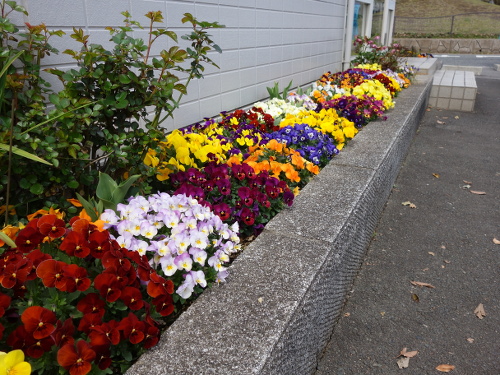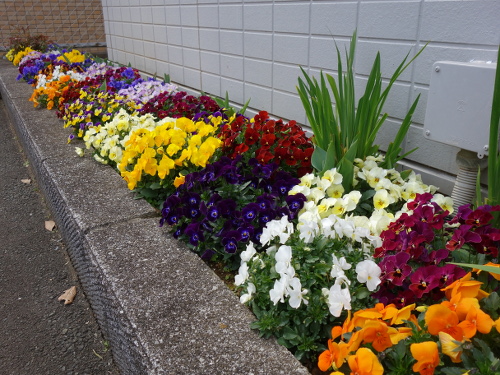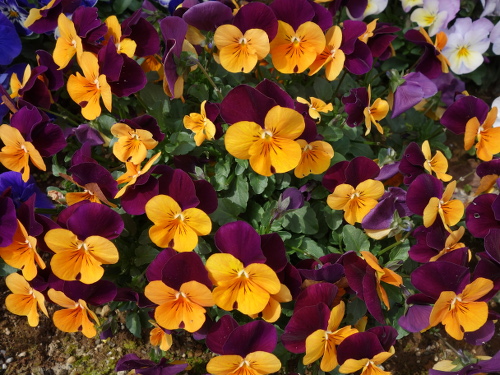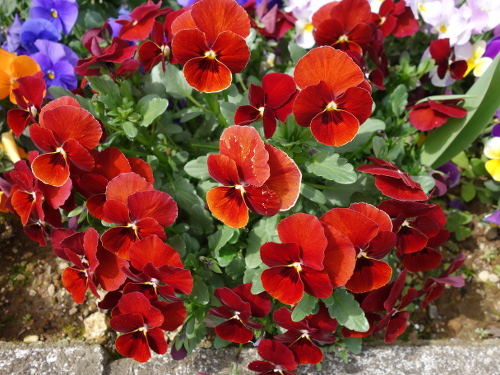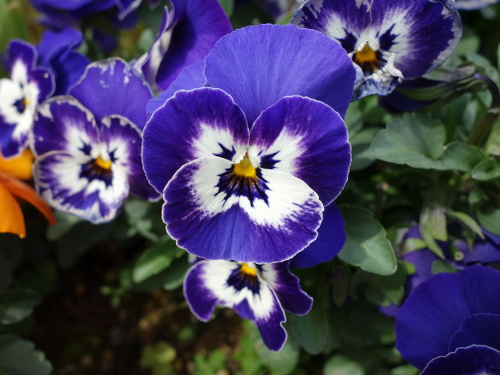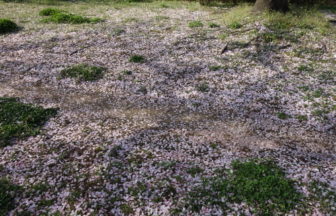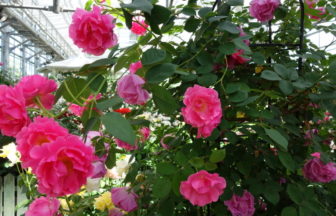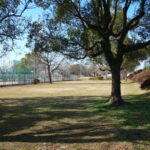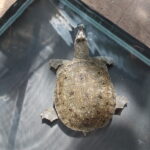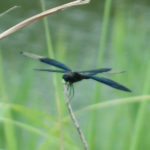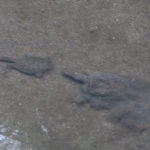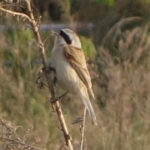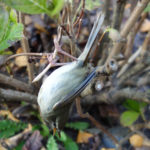Pansies are in full bloom at the secondhand store in my neighborhood. Pansy doesn’t die even when it has been frozen. The blue one shown below looks like the face of Japanese comedian Ayumu Kato of Zabunguru (ザブングル), saying “Ku-ya-shi-i-de-su. “Ku-ya-shi-i-de-su” means “It is so frustrating”. You can find it if you google his name.
A flower has bloomed. (Ha-na ga sa-ki-ma-shi-ta.) はながさきました。→ 花が咲きました。
I want to mention about pronunciation of “は”. “は” is pronounced as “ha” generally. But, when it is used as suffix to the noun of the subject, it is pronounced as “wa”. When “は” is not used as postpositional particle, it is generally pronounced as “ha”. Then you have a question. “こんにちは” that means “Hello!” is pronounced as “kon-ni-chi-wa”, not “kon-ni-chi-ha”.
Why? That’s because “kon-ni-chi-wa” is originally a part of the sentence that indicates the nominative case. Literally, “Kon-ni-chi-wa…” is translated as “Today is…” (“こんにち+は…”, “今日は…”). Therefore, “は” in “こんにちは” is pronounced as “wa”, not “ha”. Incidentally “わ” is always pronounced as “wa”.
March 16, 2016


